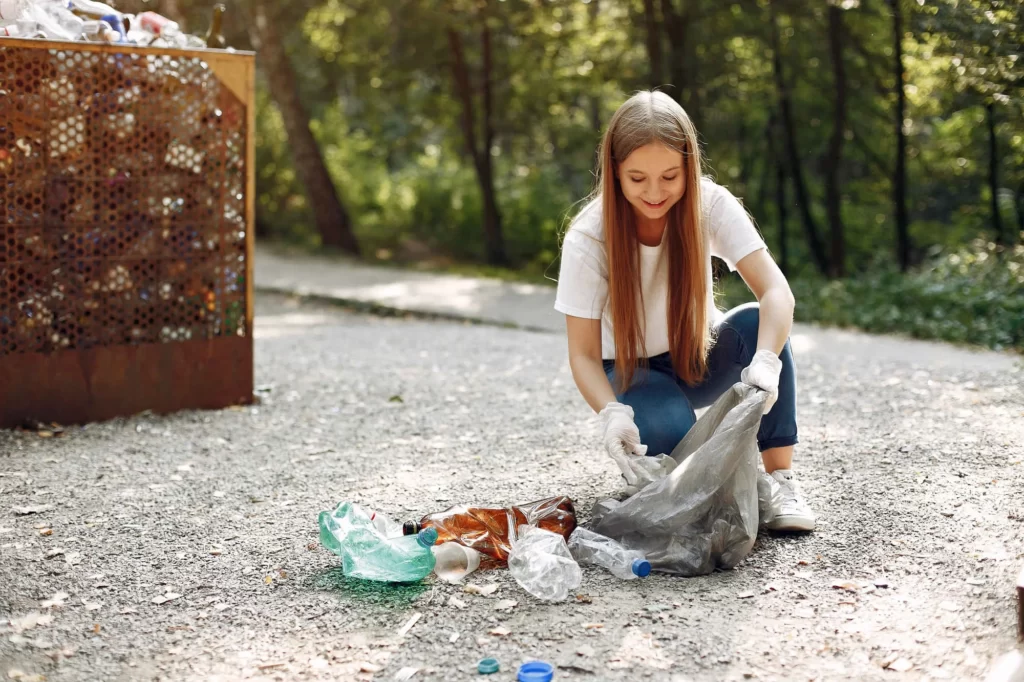
Littering is an issue that influences our current circumstance in additional ways than we frequently understand. An imprudent demonstration includes discarding waste improperly, whether it’s throwing a treats covering on the ground or abandoning a plastic container at the recreation area. In this article, we will investigate what littering is and what it significantly means for the climate.
Table of Contents
What is Littering?
Littering is the demonstration of inappropriately discarding waste materials, like rubbish, trash, or different things, in broad daylight spaces. This can remember dropping rubbish for the road, leaving trash at parks, or disposing of things in regular regions like backwoods and sea shores. Littering isn’t simply unattractive; it has serious ramifications for the climate.
How Littering Affects the Environment
- Visual Contamination: Littering makes visual contamination. It makes our environmental factors look messy and unkempt, reducing the excellence of our areas, parks, and regular regions. This visual contamination can adversely affect our psychological prosperity and our impression of the climate.
- Mischief to Untamed life: One of the most critical and appalling outcomes of littering is the damage it causes to untamed life. Creatures can confuse litter with food or become entrapped in it. Plastic packs, for instance, can be destructive when ingested by creatures as they can’t process them. This can prompt injury or demise for different animals, from birds to marine creatures.
- Water Contamination: Litter frequently winds up in water bodies like streams, lakes, and seas. Plastic things, specifically, can enjoy many years to reprieve down, during which they discharge hurtful synthetics into the water. This contamination can hurt amphibian life, upset environments, and even find its direction into the natural pecking order, at last influencing human wellbeing.
- Microplastics: Plastics that separate into minuscule particles called microplastics are a developing concern. These particles can be found all over the place, from the seas to the air we relax. Microplastics are hurtful to marine life and can enter our pecking order through fish utilization.
- Soil Contamination: Litter can likewise taint soil, making it unacceptable for agribusiness or hurting plants and natural life that depend on it. The synthetic substances and poisons in litter can saturate the ground, influencing groundwater quality and presenting wellbeing dangers to people and creatures.
- Fire Risks: Litter, particularly dry materials like paper and leaves, can become fire dangers in dry environments. Disposed of cigarette butts are a typical reason for fierce blazes, which can decimate backwoods, untamed life environments, and networks.
- Expensive Cleanup: State run administrations and networks burn through huge number of dollars every year on litter cleanup endeavors. This cash could be better utilized for additional valuable purposes, for example, further developing framework or supporting natural preservation projects.
- Human Wellbeing: Littered regions can draw in bothers like rodents and bugs, which can convey illnesses unsafe to people. Moreover, the presence of litter can empower unlawful unloading, further dirtying the climate and presenting wellbeing chances.
- Air Quality: Consuming or rotting litter can deliver contaminations up high, adding to air quality issues and respiratory issues for people and creatures.
- Social Effect: Littering encourages a culture of lack of regard for our common spaces. It can prompt a decrease in local area pride and a feeling of unresponsiveness toward the climate. At the point when we litter, we set a negative model for other people, sustaining the issue.
The Importance of Responsible Waste Disposal
To battle the unfavorable impacts of littering on the climate, it’s critical that we as a whole get a sense of ownership with our waste. Here are a few basic advances we can take:
- Use Garbage cans: Discard your loss in assigned garbage cans. At the point when there’s no receptacle close by, clutch your junk until you see as one.
- Reuse: Separate recyclable materials from general waste and use reusing canisters when accessible. Reusing lessens how much waste that winds up in landfills or as litter.
- Lessen Single-Use Things: Limit the utilization of single-use things like plastic sacks, straws, and dispensable cups. Choose reusable other options.
- Take part in Cleanups: Join neighborhood cleanup drives to assist with eliminating litter from public spaces. This can be a tomfoolery and compensating method for having a constructive outcome.
- Instruct and Bring issues to light: Show youngsters and others the significance of capable garbage removal and the natural results of littering.
- Exploring the Radia WindRunner | The World’s Largest Aircraft
- Most Useless Big Projects of the China?
- End of The Line Neom Saudi Arabia’s Linear City
- Why China and Russia Fear the B-21 RAIDER Stealth Bomber
- How Waste Plastic is Converted into Fuel
Conclusion
Littering is an issue that influences all of us, and its effect on the climate can’t be undervalued. It hurts natural life, dirties water and soil, and lessens the magnificence of our environmental elements. By understanding the results of littering and doing whatever it takes to discard our waste mindfully, we can cooperate to protect our current circumstance for people in the future. Keep in mind, a cleaner world starts with individual activities.




